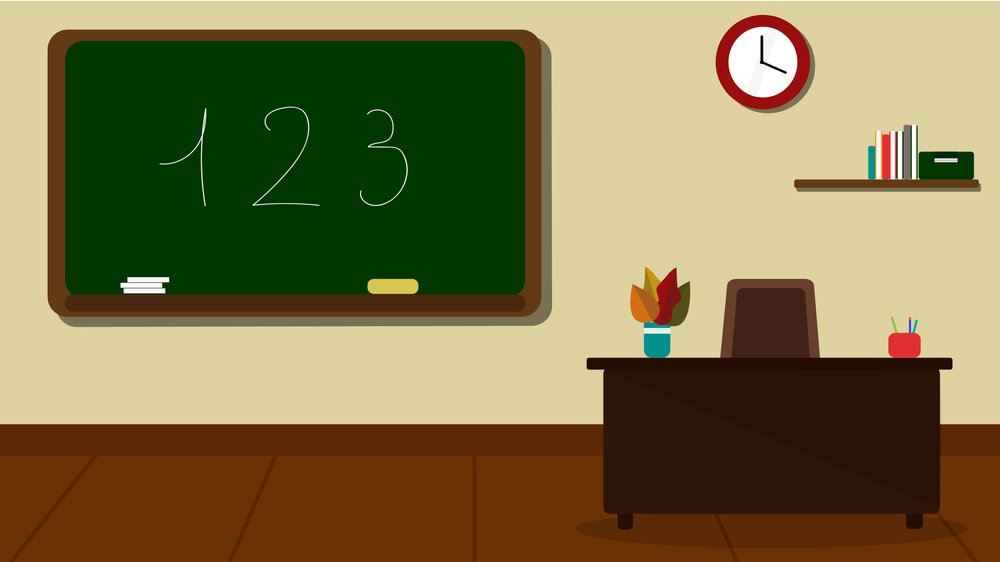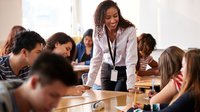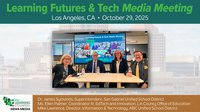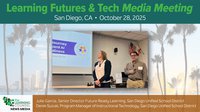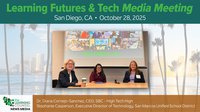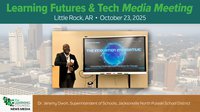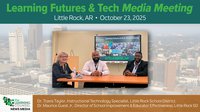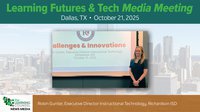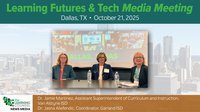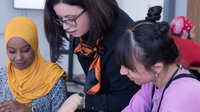Editor’s Note: This OpEd piece by Franklin Schargel is a stark reminder that the Coronavirus is an epic disrupter of our education systems. The pandemic will mandate a hybridization of K-12 public education and force us to rethink learning not just for the Fall return, but possibly forever moving forward. But sometimes, opportunity comes in strange and difficult ways. The hybrid learning models will compel us to optimize our technology, and many teachers can be ported in from remote locations to add their expertise (and humanity) as needed.
When schools reopen, a significant portion of the teaching workforce in addition to children could be at risk. The Centers for Disease Control and Prevention (CDC) have indicated that 29 percent of all teachers are at higher risk because they are in the most vulnerable age group of contracting the coronavirus because they are over the age of 55 and that 92 percent of all of the deaths caused by Covid-19 virus are for people over the age of 55. According to an AEI (American Enterprise Institute) report, four states have one quarter of their teachers 55 years and older. Over one quarter of all school principals are over 55 years of age. Those numbers do not account for the educators with other health concerns or with high-risk family members. Those who are over the age of 55 are more vulnerable to the Covid-19 virus and are more prone to have asthma, chronic lung disease, diabetes, kidney disease, severe obesity and liver disease.
The White House would like to open schools to get the economy moving. But to do that, provision must be made to put teachers back into classrooms so that working parents can work. According to a USA Today poll, six in 10 parents say they are likely to continue home schooling instead of sending their children back to school in the fall. Also, President Trump doesn't possess the legal authority to mandate that schools reopen. He has stated, “I would like to see schools open, wherever possible.” He went on to say that with respect to teachers over the age of 60 or older, “I think that they should not be teaching school for a while and everybody would understand that fully.”
There are certain potential problems that must be addressed before schools reopen:
· Parents, political leaders and school administrators have come to realize that virtual classes are no substitute for face-to-face instruction.
· Educational resources are distributed unequally across the country so some districts will not be able to address all their problems like broadband and having a sufficient number of computers.
· According to scholars at Brown and the University of Virginia, the average student could have already lost a third of his or her expected progress in reading and half in math. How will this lost work be made up?
· Most states are now financially tapped out and are making overtures about cutting the number of educators, their salaries, health benefits and/or their pensions.
· Only seven states have fully funded their teacher pensions. Before this crisis even began, state pension plans across the country were already more than one trillion dollars short of the funding needed to pay their future obligations to retirees, according to retirement experts at The Pew Charitable Trusts.
· US News (June 4, 2020) reported that the Philadelphia Federation of Teachers survey of 13,000 of their members indicated that the teacher’s biggest concern was if schools weren’t in better condition, “they weren’t coming back.” The National Center for Educational Statistics wrote that in 1998, the average public-school building in the United States was 42 years old. Many of them lack air conditioning, adequate heating,
· Both the American Federation (AFT) and the National Education Association (NEA) have said that schools shouldn’t reopen until there is more widespread testing and contract tracing.
· The New York City Education Department has reported that at least 72 New York City staffers have died including 28 teacher and 28 paraprofessionals. What if this is true for the rest of the country?
· Most states are already facing a shortage of teachers especially in critical areas such as in Special Education, Science, Math, Technology and English as A Second Language. Where will we find new math, science, special education and technology teachers now that the educational pipeline has narrowed?
· How will children be transported to school with regard to social distancing?
· At best, it will be difficult to social distance in school especially in the halls, in physical education classes, in mass locations like lunchrooms and auditoriums.
· Over 50 percent of students receive free or reduced lunch - how can schools continue to feed them if school lunchrooms cannot not provide enough space between students?
· Class size limits do not provide enough space for social distancing.
· How will last term’s work be made up? Marked?
· Will students be promoted to the next grade? To middle or high school?
· How do schools teach social distancing and continuous hand washing to 5-7-year-olds?
· What provision will be made to educate students with disabilities?
According to an article in the New York Times (6/7/2020), Austin Beutner, Superintendent of the Los Angeles Unified School District, said that the term “safely open” was misleading because the risk from the virus will not be zero until there’s a vaccine or a treatment which is 100 percent effective.”
The opening of schools should be driven by safety, not by economics or a calendar. In addition, schools should not reopen until there is a vaccine, widely available and distributed, to contain the spread of the coronavirus, and widespread testing and tracing of the illness to ensure the public’s confidence that children and adults can safely return to schools. And that children, teachers and other staff will be protected.
About the author
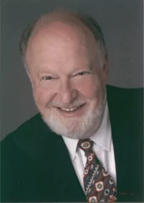
Franklin P. Schargel is a former classroom teacher, school counselor and school administrator who successfully designed, developed and helped implement a process that: dramatically increased parental engagement, increased post-secondary school attendance and significantly lowered his Title 1 high school’s dropout rate. The U.S. Department of Education, Business Week, Fortune Magazine, National Public Radio (NPR) the Public Broadcasting System (PBS) and The New York Times have recognized his work. In addition, Schargel served as the Education Division Chair of the American Society for Quality and helped develop the National Quality Award, the Malcolm Baldridge Award for Education.
Schargel is an internationally recognized speaker, trainer and author of thirteen best-selling books. His last published book: “Creating Safe Schools: A Guide for School Leaders, Classroom Teachers, Counselors and Parents” has been published internationally by Francis and Taylor, LLC. In addition, he has written over 100 published articles dealing with school reform.

